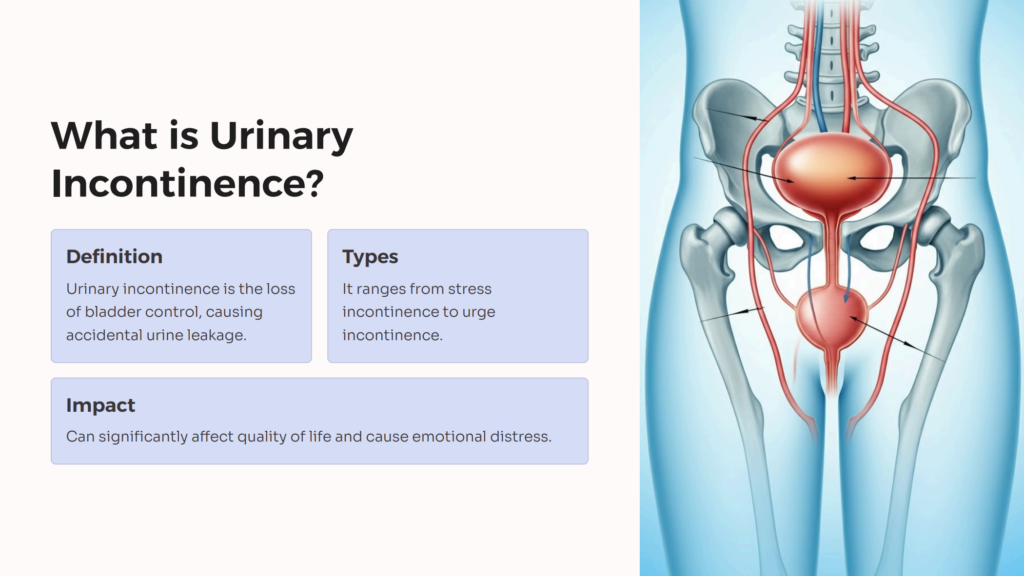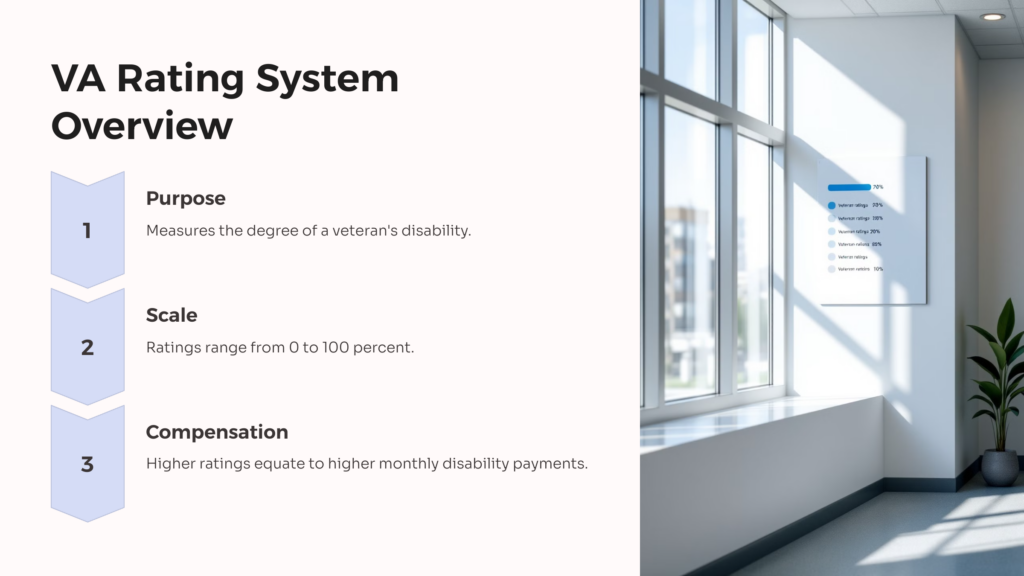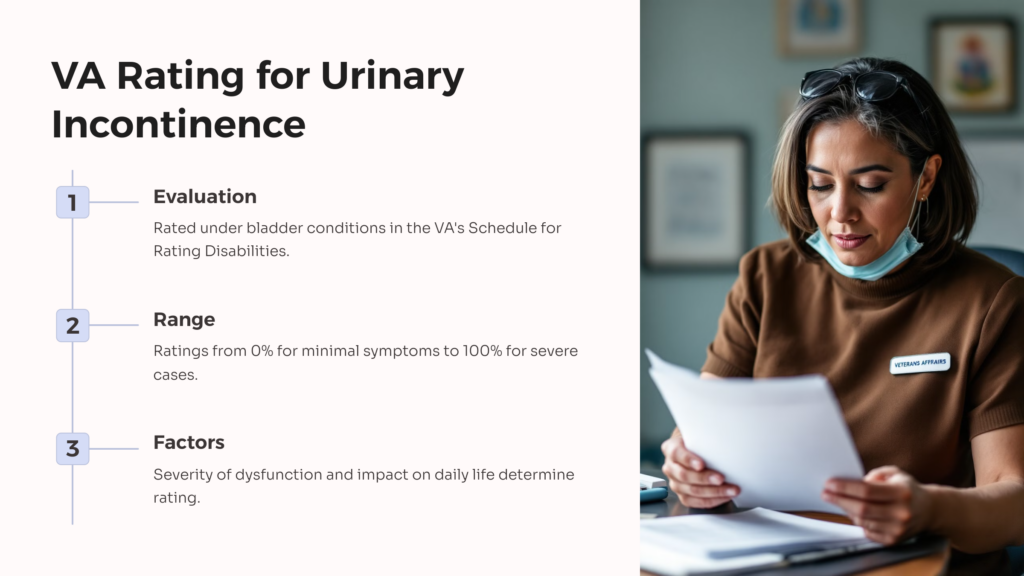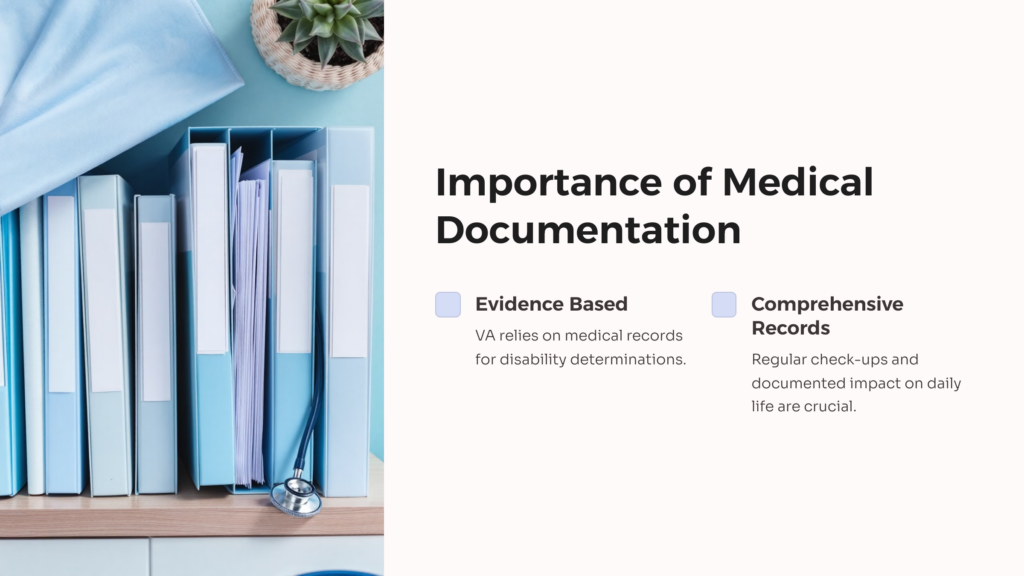In the framework of veterans’ disability benefits, urinary incontinence can be classified as a disability that may often be overlooked. The Department of Veterans Affairs (VA) acknowledges this condition as a debilitating disability and grants VA disability compensation accordingly. This article will discuss urinary incontinence’s intricacies in light of the VA disability rating and VA benefits system.
What is Urinary Incontinence?

Urinary incontinence is a medical condition characterized by the extrinsic loss of bladder control, resulting in accidental urine leakage. It ranges from involuntary leakage when sneezing or coughing (stress incontinence) to having an extremely strong impulse to urinate that is hard to control (urge incontinence). People with severe urinary incontinence may not be able to hold back urine before reaching a toilet. The condition, while not life-threatening, can have severe implications on a person’s quality of life, enabling them to withdraw from social situations and feel emotionally distressed. Urinary incontinence can be caused by several things, including injury, sicknesses such as prostate cancer, a urinary tract infection, or some other dysfunction in the urinary tract system.
Understanding the VA Rating System

The VA disability rating system is a method used by the Department of Veterans Affairs to measure the degree of a veteran’s disability. The purpose is to equate the severity of their disability—which can range from 0 to 100 percent —with the decline in their earning capacity due to that disability. A higher VA rating indicates a more extreme disability, which thus equates to a higher monthly VA disability compensation payment. Disability ratings ensure that veterans receive the right amount of VA disability benefits they need to accommodate their disability.
VA Rating for Urinary Incontinence

The VA disability ratings for urinary incontinence are precisely outlined in the VA’s Schedule for Rating Disabilities. The rating schedule categorizes the types of urinary incontinence based on their severity and lays out possible ratings, higher ratings leading to higher VA disability benefits. It is important to note that there is not a set urinary incontinence VA rating. Instead, it is evaluated under bladder conditions—ranging from a 0 percent disability rating for minimal symptoms and minor dysfunction to a 100 percent rating for the most severe cases of urinary incontinence.
Determining the VA Rating for Urinary Incontinence
Determining a veteran’s VA rating for urinary incontinence depends primarily on the severity of the dysfunction and how it affects their daily life. For example, veterans who require the use of absorbent materials and experience more than one episode of incontinence per week can receive a 60 percent disability rating. On the other end of the spectrum, veterans who experience loss of bladder control less than once per week but still need absorbent products to deal with urinary frequency may be qualified for a 30 percent disability rating.
Moreover, if a veteran requires surgical intervention to manage their urinary incontinence and their condition does not improve post-surgery, they can receive up to a 100 percent disability rating for six months following the procedure. The rating is then reassigned based on the residual symptoms and the impact on the veteran’s lifestyle for the long term disability.
The Importance of Medical Documentation for VA Rating

Medical records are crucial for a proper VA disability rating. The VA relies on the proof submitted by veterans, like medical examinations, medical treatment history, and doctors’ statements, to make disability determinations. While the VA may arrange further examinations if the evidence is considered insufficient, having robust medical records expedites the VA disability claim process. To receive appropriate compensation for urinary incontinence, veterans should ensure regular check-ups and consistently document their condition’s impact on everyday life.
Connections to Service
The VA rates disabilities that are service-connected, signifying they were caused or exacerbated by the veteran’s military service. To establish a service connection for urinary incontinence, the veteran must show the condition emerged while in service or is otherwise linked to their military service. This is yet another instance where comprehensive medical documentation can promote the process of being assigned the correct disability rating.
Secondary Service Connection
There are scenarios where urinary incontinence could be considered a secondary condition to another service-connected condition. For instance, if a veteran is service-connected for a spinal cord injury that contributes to the development or exacerbation of urinary incontinence, they might be qualified to receive compensation for urinary incontinence as a secondary condition. Again, precise medical documentation and expert opinion linking the primary condition to urinary incontinence greatly help in establishing the secondary service connection in the VA disability claim.
As seen above, understanding the nuances of how the VA rates urinary incontinence is vital for initiating the right claim and receiving the deserving compensation. While the system may seem complex, with comprehensive knowledge, medical documentation, and professional advice, veterans can indeed actualize the benefits extended by the VA for their disability.
It’s essential that veterans communicate openly with their healthcare providers, document all symptoms thoroughly, and advocate for themselves through the VA benefits process. Remember, UA rating for urinary incontinence is a recognition of the disability’s impact on the veterans’ life, affirming their sacrifice, and ensuring the veteran isn’t alone in their battle against this disruptive condition.
AllVeteran.com is here to help. Check our site out and take the quiz on our homepage for a free medical evidence screening today.
 AllVeteran.com Advisors
AllVeteran.com Advisors
With expertise spanning local, state, and federal benefit programs, our team is dedicated to guiding individuals towards the perfect program tailored to their unique circumstances.











